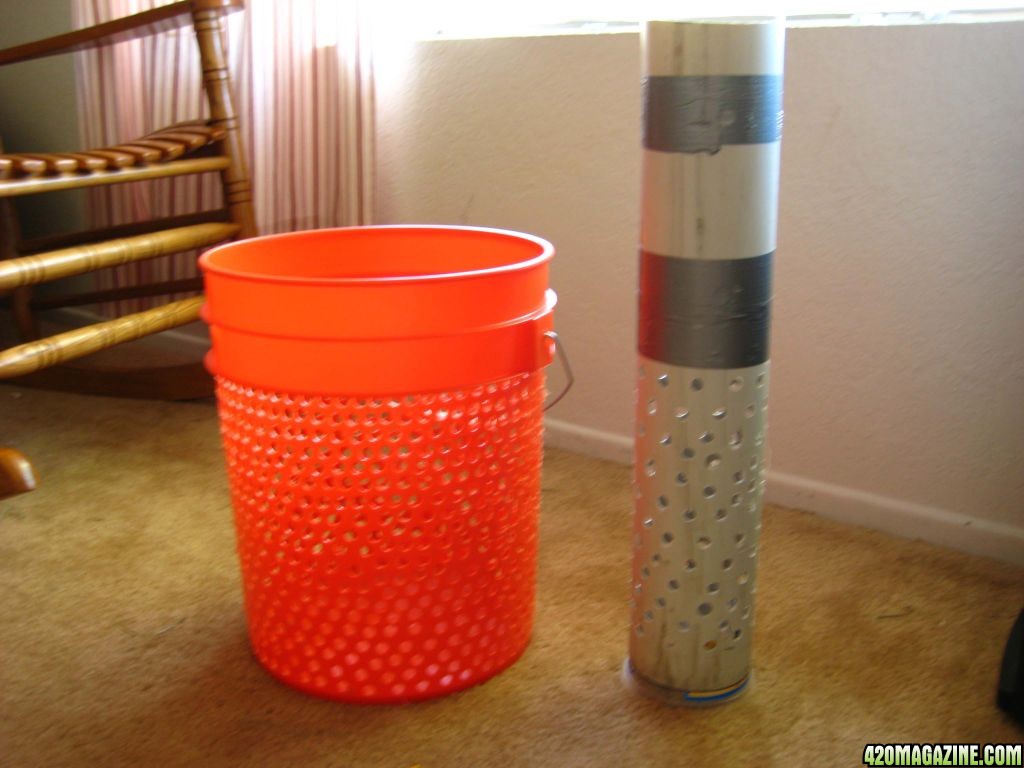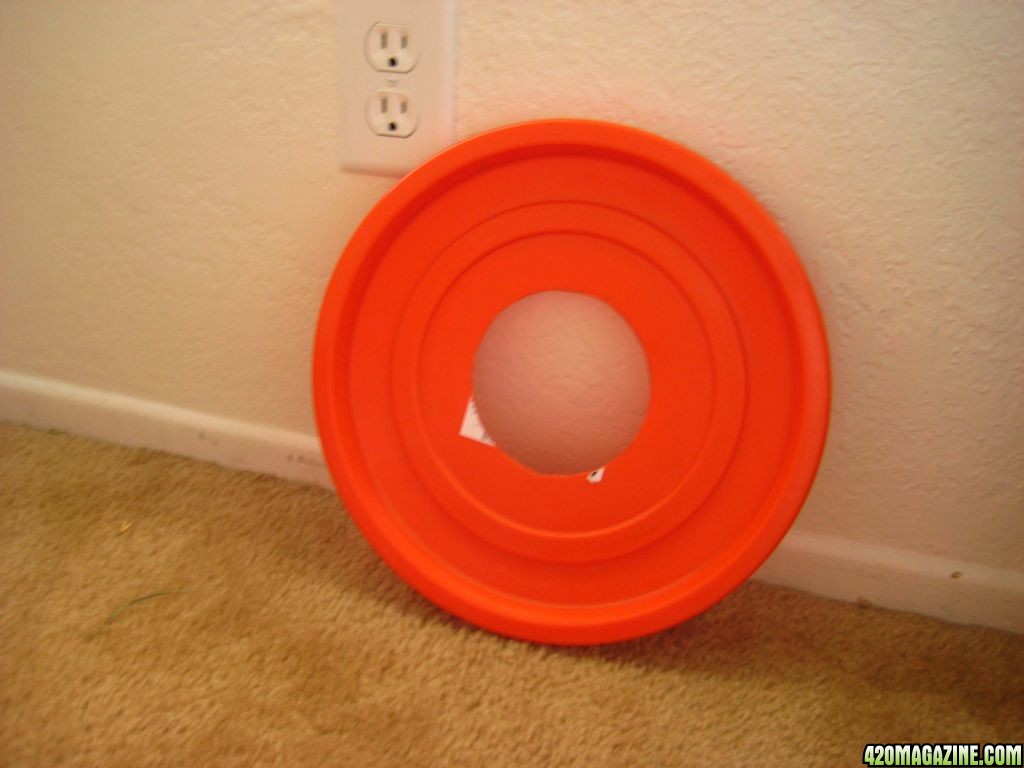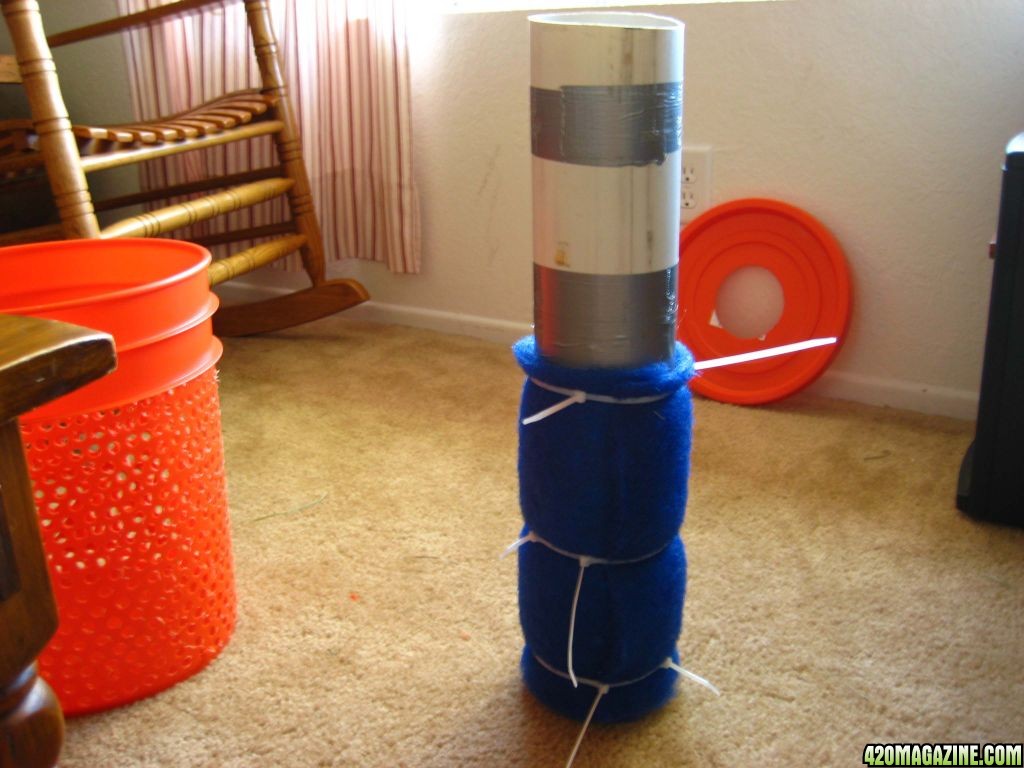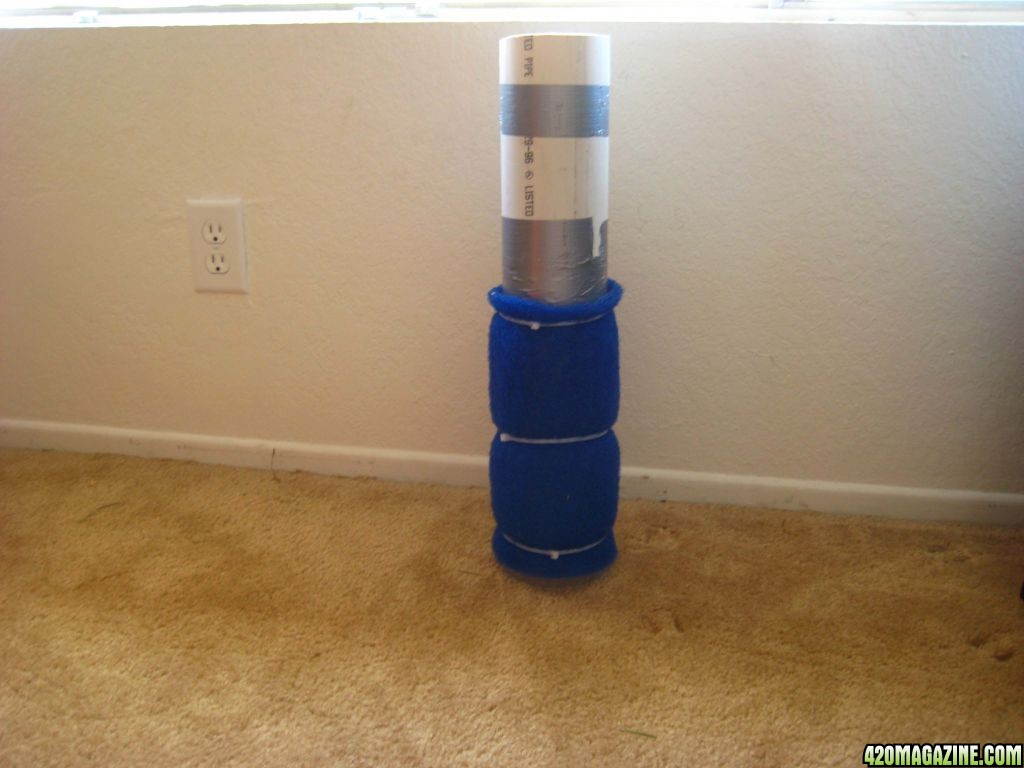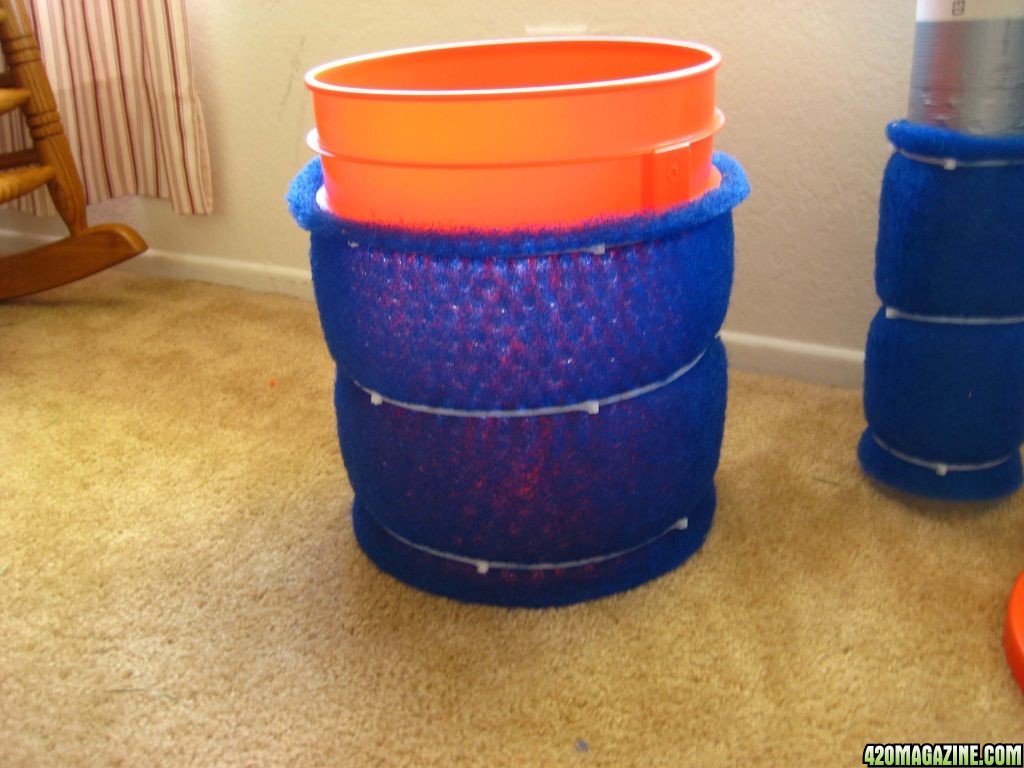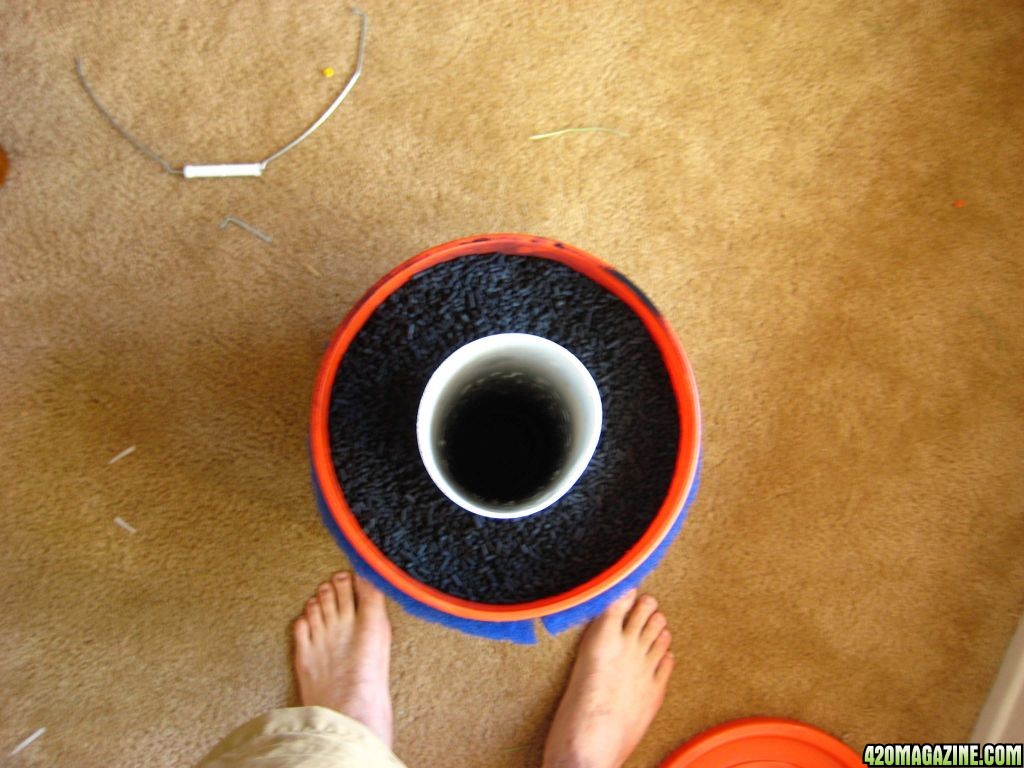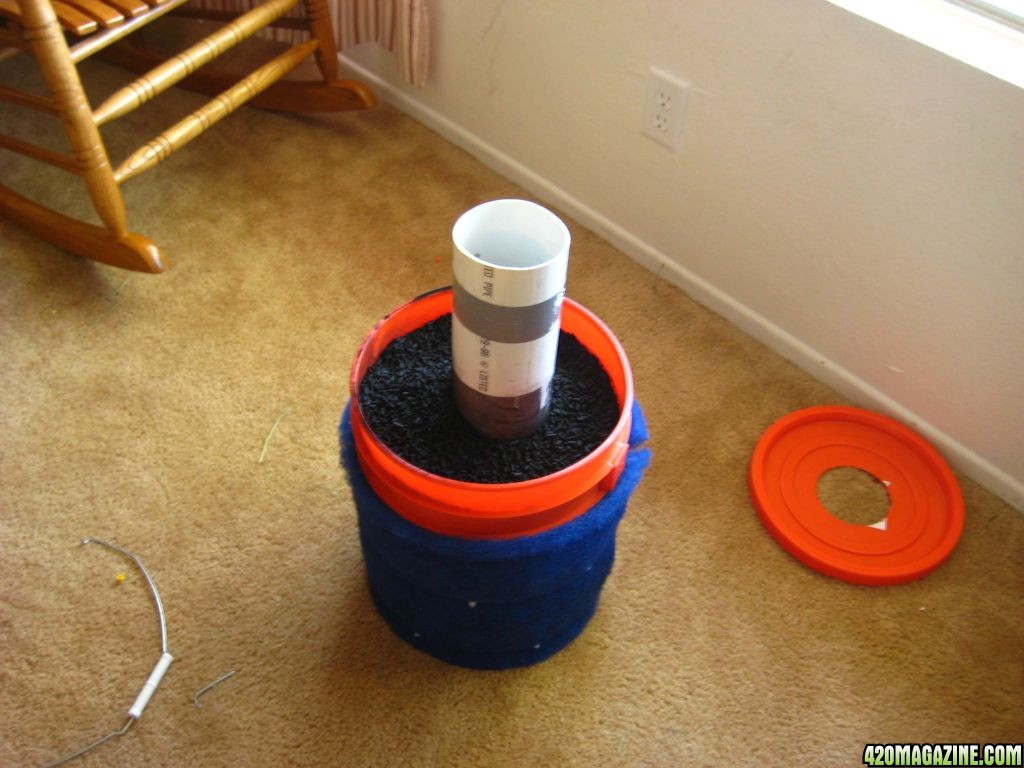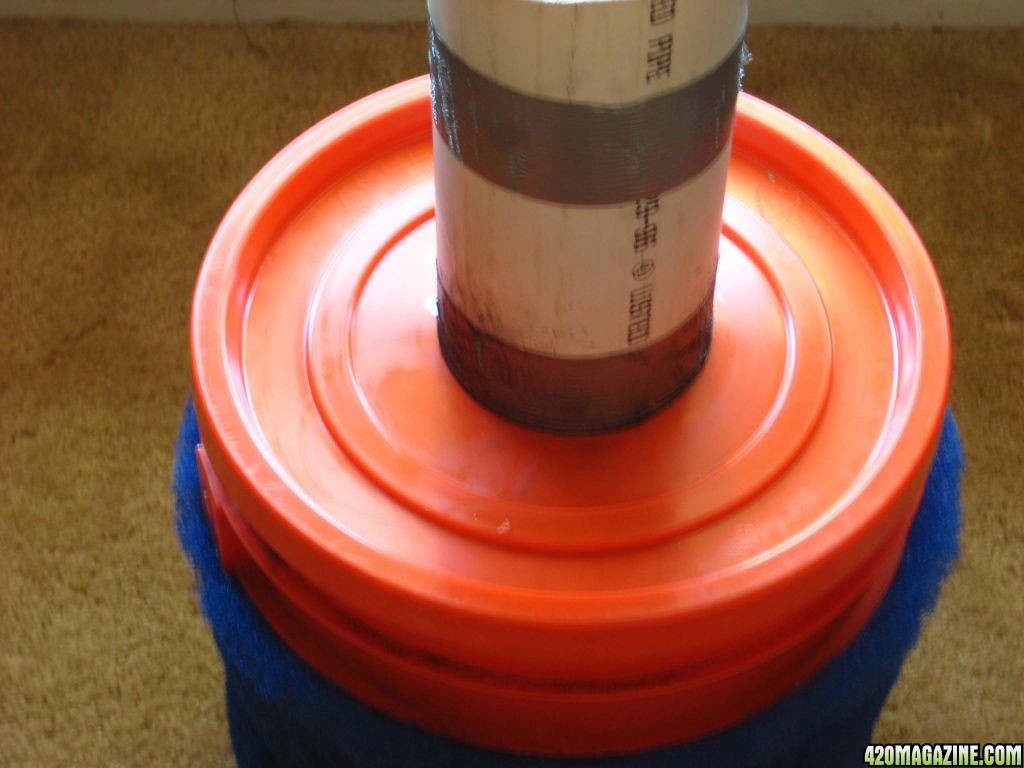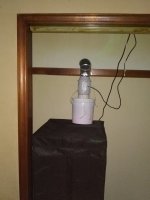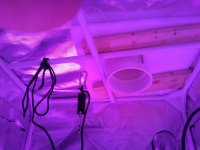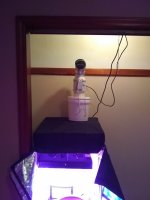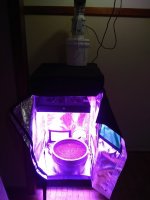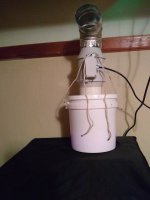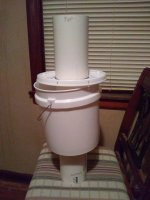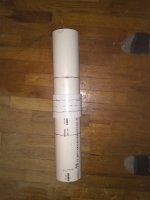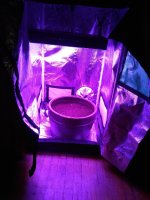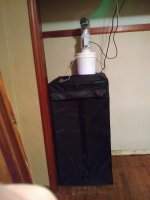Here a step by step filter construction that I am currently using. Prior to installing this filter you could smell my grow if you go within 25 feet of my house. Within 20 mins I couldn't detect the slightest odor unless you went in to the actual grow room... I have this filter set up a a single pass filter hooked up to my room exhaust. I have not noticed any temp rise or air flow reduction. I hope this will be beneficial to the 420 community. Enjoy
Materials needed
1 5 gal bucket w/ lid
4 gal of activated carbon pellets
3' section of 4" PVC drain pipe
1 roll of duct tape
1 section of flexible ducting
1 section of blue filter material
1 package of zip ties
1 4" pvc cap
Step 1
Drill holes in the sides of the bucket and PVC pipe. The more holes the better the air flow. (Note drill the bucket with a fast drill speed helps to keep the burrs down, and the PVC with a slow drill speed prevents the pipe from breaking.)
The end result should look like this you only want to drill holes in the pipe as high as you think the carbon will go you want the first hole in the pipe to be about 3"-4" submerged in carbon. If you drill to many holes simply cover the holes up with duct tape. You can use the PVC cap to plug the end of the pipe that will be in the bucket or just find something to plug the end. I used an empty sour cream container and silicone caulk.
Step 2
Place the end of the pipe on the center of the lid and trace with sharpie marker then cut out as carefully as possible with a razor knife. This is where the pipe will go through the lid you want a tight fit to prevent pipe from shifting in the carbon.
Step 3
You will need to cut the filter material to size and wrap the material around the pipe and the bucket, and secure it with zip ties. This will allow you to use larger holes for better air flow while keeping the carbon from falling through.
Step 4
Trim off excess zip ties
Step 5
Place the plugged end of the pipe in the bucket. Ensuring the pipe stays straight and centered pour carbon in filling the bucket around the pipe.
Step 6
Install lid and run a bead of silicone around the seam.
Step 7
Install the filter on you inline fan. if you have a 4" fan then it should be straight forward if you have another size you will need a PVC adapter to step up to your fan and ducting size. If you have any questions you can post so everyone can see and I will be happy to answer.




